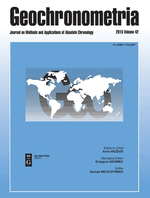
Geochronometria
Scope & Guideline
Connecting Researchers with Geological Insights
Introduction
Aims and Scopes
- Chronological Analysis of Geological Deposits:
The journal prioritizes research that utilizes various dating methodologies, including radiocarbon, luminescence, and electron spin resonance, to establish the age of geological and archaeological deposits. - Environmental and Climate Studies:
Geochronometria publishes studies that investigate the impact of environmental changes and climate oscillations on sedimentation processes, helping to understand the historical context of climate change. - Interdisciplinary Approaches to Dating:
The journal encourages interdisciplinary research that combines geology, archaeology, and environmental science, reflecting the complex interactions between human activity and natural processes. - Methodological Innovations:
A significant aspect of the journal is its focus on methodological advancements in dating techniques, contributing to more accurate and reliable dating results in various contexts. - Regional Studies with Global Implications:
Geochronometria emphasizes studies that not only focus on specific geographical areas but also provide insights that are relevant to broader global geological and environmental issues.
Trending and Emerging
- Climate Change and Environmental Impact Studies:
There is a growing focus on understanding the impacts of climate change through geological records, as evidenced by studies linking fluvial sediments and climate oscillations. - Advancements in Luminescence Dating Techniques:
Research related to innovative luminescence dating methods is on the rise, showcasing the journal's commitment to methodological advancements and improved dating accuracy. - Integration of Geochronology with Modern Technology:
The application of modern analytical techniques, such as statistical modeling and advanced imaging, is increasing, allowing for more detailed and comprehensive analyses of geological and archaeological data. - Impact of Human Activity on Geological Processes:
Studies exploring the effects of human activities on geological formations and sedimentation patterns are becoming more prevalent, reflecting an interdisciplinary approach that combines geology and anthropology. - Regional Studies with Global Comparisons:
Emerging research increasingly emphasizes regional studies that draw comparisons to global geological phenomena, highlighting the interconnectedness of geological processes.
Declining or Waning
- Traditional Archaeological Chronologies:
The emphasis on traditional archaeological dating methods is decreasing as newer techniques, such as luminescence and electron spin resonance, gain traction and provide more precise results. - Paleoenvironmental Reconstructions without Chronological Context:
Research that lacks robust chronological frameworks is becoming less common, as the journal increasingly favors studies that integrate dating with paleoenvironmental analyses. - Single-Technique Studies:
There is a noticeable decline in studies that rely solely on one dating technique. The trend is shifting towards multi-method approaches that enhance the robustness of chronological data. - Localized Studies with Limited Applicability:
Research focusing narrowly on specific, localized contexts without broader implications is less frequently published, reflecting a shift towards studies with wider relevance and applicability.
Similar Journals

Earth and Environmental Science Transactions of the Royal Society of Edinburgh
Fostering interdisciplinary dialogue in Earth sciences.Earth and Environmental Science Transactions of the Royal Society of Edinburgh is a prestigious journal published by Cambridge University Press, dedicated to advancing research in the field of Earth and planetary sciences, as well as environmental science. With its ISSN 1755-6910 and E-ISSN 1755-6929, the journal has established itself as a crucial platform for disseminating innovative research and comprehensive reviews since its inception in 2007. Positioned in the Q3 quartile for both Earth and Planetary Sciences and Environmental Science, it contributes significantly to the ongoing dialogue and development in these areas, boasting a Scopus ranking that reflects its commitment to scholarly excellence with an emphasis on interdisciplinary approaches and real-world applications. The journal is based in the United Kingdom, with its editorial office located at the Edinburgh Building, Shaftesbury Road, Cambridge. As an essential resource for researchers, professionals, and students alike, Earth and Environmental Science Transactions offers opportunities for open discourse on pressing environmental challenges, fortifying its role in fostering a deeper understanding of our planet's systems and their interconnectedness.

Geochronology
Unraveling time's mysteries through innovative geochronological research.Geochronology is a leading journal in the fields of geology, paleontology, and stratigraphy, published by COPERNICUS GESELLSCHAFT MBH in Germany. Since its inception in 2019, this Open Access journal has gained significant recognition, achieving Q1 quartile rankings in its respective categories for 2023, and earning distinctions such as Rank #3 in Earth and Planetary Sciences, Paleontology, and Rank #8 in Stratigraphy on Scopus. With a commitment to disseminating high-quality research, Geochronology provides a platform for innovative studies that explore the intricacies of temporal geological processes and their implications for understanding earth history. Researchers, professionals, and students alike are invited to explore the latest findings and theoretical advances that contribute to the vital discourse in earth sciences, enhancing both academic and practical applications in the field.
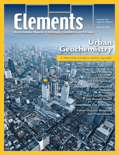
Elements
Pioneering Research in Mineralogy and BeyondElements is a premier academic journal published by the Mineralogical Society of America, dedicated to advancing knowledge in the fields of Earth and Planetary Sciences and Geochemistry and Petrology. Since its inception in 1973, this journal has established itself as a leading source of impactful research, evidenced by its prestigious Q1 rankings in both categories in 2023, placing it among the top journals globally with Scopus ranks of #18 and #23, respectively. Elements is uniquely positioned to foster interdisciplinary dialogue, offering a platform for groundbreaking studies that explore the fundamental processes shaping our planet. Although it operates without an open access model, its rigorous peer review process guarantees the integrity and quality of published work, making it an essential resource for researchers, professionals, and students eager to stay abreast of the latest developments in mineralogy and earth sciences. With a commitment to excellence, Elements continues to push the boundaries of our understanding of geological phenomena and their implications for both science and society.
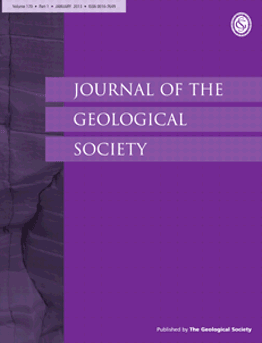
JOURNAL OF THE GEOLOGICAL SOCIETY
Connecting Scholars to the Heart of GeologyJOURNAL OF THE GEOLOGICAL SOCIETY, published by GEOLOGICAL SOC PUBL HOUSE, is a premier academic journal dedicated to advancing the field of geology. With a rich history dating back to 1845 and continuously published until 2024, this journal caters to a diverse audience of researchers, professionals, and students involved in earth sciences. The journal is recognized for its high impact factor, situating it in the top Q1 category in the field of geology, as indicated by its impressive Scopus rank of #49 out of 321, positioning it at the 84th percentile in Earth and Planetary Sciences. This esteemed scholarly platform promotes rigorous peer-reviewed research, ensuring that novel findings contribute to the global geological discourse. Although it operates under a subscription model, the journal's archive offers valuable insights for anyone pursuing excellence in geological research. The JOURNAL OF THE GEOLOGICAL SOCIETY stands as a vital resource for disseminating scientific knowledge and fostering educational growth within the field.

EARTH AND PLANETARY SCIENCE LETTERS
Unveiling Earth's Secrets Through Rigorous ResearchEARTH AND PLANETARY SCIENCE LETTERS, published by ELSEVIER, stands as a premier academic journal in the fields of Earth and Planetary Sciences, Geochemistry and Petrology, Geophysics, and Space and Planetary Science. Since its inception in 1966 and continuing to 2024, the journal has consistently maintained an impressive reputation, ranking in the top quartile (Q1) across several categories, highlighting its vital role in advancing scholarly research. With a Scopus ranking of #4 in both Geophysics and Geochemistry and Petrology, and a notable 97th percentile in multiple Earth sciences categories, EARTH AND PLANETARY SCIENCE LETTERS provides a platform for groundbreaking research, encouraging rigorous investigation and dissemination of knowledge. While not available as an Open Access publication, the journal remains highly accessible to academics and professionals worldwide, providing invaluable insights and fostering discussions that influence the future of Earth sciences. Whether you are a researcher, educator, or student, this journal is a crucial resource for understanding our planet and its processes.
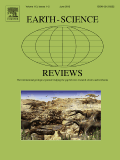
EARTH-SCIENCE REVIEWS
Connecting scholars to the latest Earth science breakthroughs.EARTH-SCIENCE REVIEWS, published by Elsevier, is a prestigious journal in the field of Earth and Planetary Sciences. With an impressive impact factor and ranked in the Q1 quartile for its category, this journal has established itself as a leading platform for the dissemination of high-quality research and reviews. Spanning topics within general Earth and planetary sciences, the journal provides a unique confluence of interdisciplinary studies, serving researchers, professionals, and students who seek to deepen their understanding and foster advancements in the field. Based in the Netherlands, the journal has been integral to the scholarly community since its inception in 1966, with an ongoing commitment to presenting cutting-edge reviews that propel scientific discussions forward. While it does not offer open access options, its rigorous review process and high-ranking status make it a valuable resource for anyone engaged in earth sciences.
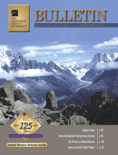
GEOLOGICAL SOCIETY OF AMERICA BULLETIN
Advancing Earth Sciences Through Rigorous ResearchThe Geological Society of America Bulletin (GSA Bulletin), with ISSN 0016-7606 and E-ISSN 1943-2674, is a premier scholarly journal published by Geological Society of America, Inc. Based in the United States, this journal has been a cornerstone of geological research since its inception in 1890, making significant contributions to the understanding of Earth sciences over more than a century. Recognized for its rigorous peer-review process, the GSA Bulletin currently holds a prestigious Q1 ranking in Geology, positioning it among the top 14 journals in Earth and Planetary Sciences in terms of Scopus ranking, reflecting the high quality and impact of the research it publishes. Researchers, professionals, and students alike benefit from its comprehensive coverage of geological topics, including sedimentology, volcanology, and paleontology, which supports the advancement of knowledge in the geosciences. While the journal is not open access, it continues to provide a vital platform for innovative research and critical discussions that shape the future of geology.

ACTA GEOLOGICA SINICA-ENGLISH EDITION
Exploring the Depths of Geological KnowledgeACTA GEOLOGICA SINICA-ENGLISH EDITION is a distinguished academic journal published by Wiley, providing a platform for cutting-edge research in the field of geology. With an ISSN of 1000-9515 and E-ISSN 1755-6724, this journal has been a pivotal resource since its inception in 1988, catering to scholars and professionals until 2024. The journal is recognized for its high-quality articles, achieving a Q2 ranking in the field of Geology according to the 2023 category quartiles, and ranks #122 out of 321 in the Scopus Earth and Planetary Sciences sector, placing it within the 62nd percentile among its peers. Although currently not available as an open access publication, it remains a significant repository of knowledge that supports ongoing geological research and exploration. For researchers, students, and professionals looking to deepen their understanding of geological sciences, ACTA GEOLOGICA SINICA-ENGLISH EDITION stands as an essential journal, promoting collaboration and innovation in the earth sciences.

QUATERNARY RESEARCH
Advancing Knowledge of Earth's Transformative Era.QUATERNARY RESEARCH, published by Cambridge University Press, is a leading academic journal that focuses on the study of the Quaternary Period, the most recent geological time period. With a strong emphasis on interdisciplinary research, the journal has significantly contributed to our understanding of Earth's dynamic systems and processes, making it an essential resource for researchers and professionals in the fields of Earth and Planetary Sciences, Earth-Surface Processes, and the Arts and Humanities. It is recognized for its high-impact contributions, reflected in its impressive Q1 rankings across multiple categories, including its position as 69th out of 552 in Arts and Humanities and 49th out of 195 in General Earth and Planetary Sciences, showcasing its influence and relevance in the academic community. While QUATERNARY RESEARCH does not provide open access options, it remains a crucial platform for disseminating valuable research findings and fostering scholarly dialogue. The journal's coverage spans from 1970 to 2024, serving as a comprehensive archive of key developments in the field.
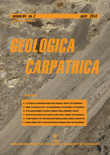
GEOLOGICA CARPATHICA
Bridging the Gap Between Theory and Practice in GeologyGEOLOGICA CARPATHICA, with ISSN 1335-0552 and E-ISSN 1336-8052, is a distinguished open access journal published by the Slovak Academy of Sciences Geological Institute, serving as a pivotal platform for the dissemination of research in the field of Geology. Established in 1991 and continuing through 2024, the journal is recognized for its significant contributions to Earth and Planetary Sciences, evidenced by its 2023 Scopus ranking placing it in the second quartile (Q2) within Geology. With an H-index that showcases its impactful publications, GEOLOGICA CARPATHICA is committed to fostering scholarly communication while promoting accessible research, having adopted an open access model since 2009. Located in beautiful Bratislava, Slovakia, this journal aims to engage a global audience of researchers, professionals, and students interested in ecological, geological, and environmental studies, making it a prominent resource for enriching the scientific community's understanding of the Carpathian region and beyond.